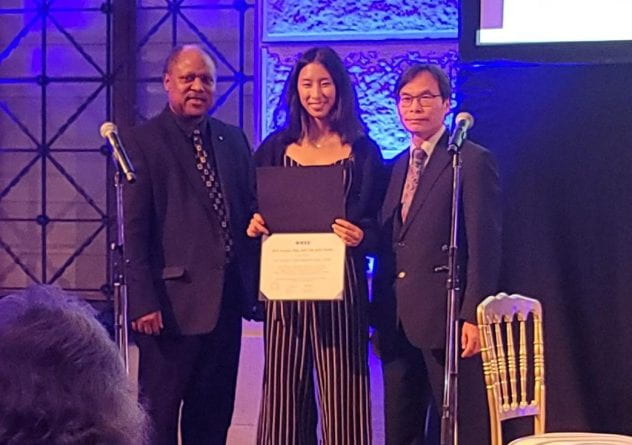We’re presenting two papers at the upcoming IEEE SMC 2022 conference in Prague! We presented two papers – the first detailing our experience using intracranial stimulation to deliver sensory feedback in a virtual reality environment, and the second detailing a new method for identifying time-varying neural responses to intracranial stimulation. If you’re going to SMC 2022 in Prague, come see our presentations!
Touching the Void: Intracranial Stimulation for NeuroHaptic Feedback in Virtual Reality
Courtnie Paschall, Jason Hauptman, Rajesh Rao, Jeffrey Ojemann, Jeffrey Herron
Abstract: Direct cortical stimulation of the somatosensory cortex (S1-DCS) has been shown to evoke distinct and localizable percepts, exploitable as neurohaptic feedback. In this study, we leveraged a novel virtual reality (VR) experimental platform to evaluate S1-DCS neurohaptic feedback during naturalistic object interaction. Two human subjects implanted with intracranial electrodes for seizure localization were asked to discriminate between visually identical virtual objects based on their distinct S1-DCS neurohaptic profiles. In a binary discrimination task, neurohaptic feedback was either present or absent while grasping a virtual object. In the ternary discrimination task, neurohaptic feedback was either present in one of two distinct neurohaptic sequences or absent. Both subjects performed significantly above chance in binary and ternary discrimination, demonstrating the efficacy of S1-DCS as neurohaptic feedback. Successful ternary discrimination also demonstrated that different sequences of amplitude-modulated S1-DCS at a single pair of electrodes can evoke discriminable neurohaptic percepts. Moreover, amplitude-modulated S1-DCS sequences were shown to elicit sensorimimetic percepts described as “bumpy” and “smooth” in Subject 1, and as a sensation of movement in the paralyzed hand of Subject 2. Our study demonstrates the reliability and discriminability of both simple and complex S1-DCS for neurohaptic feedback during immersive VR object interaction and supports the use of immersive VR for neurohaptic design towards the development of functional brain computer interface.
Human Intracortical Responses to Varying Electrical Stimulation Conditions Are Separable in Low-Dimensional Subspaces
Samantha Sun, Lila Levinson, Courtnie Paschall, Jeffrey Herron, Kurt Weaver, Jason Hauptman, Andrew Ko, Jeffrey Ojemann, Rajesh Rao
Abstract: Electrical stimulation is a powerful tool for targeted neurorehabilitation, and recent work in adaptive stimulation where stimulation can be adjusted in real-time has shown promise in improving stimulation outcomes and reducing stimulation-induced side effects. Mapping the relationship between electrical stimulation input and neural activity response can help reveal interactions between stimulation and underlying neural activity and can give us tools to iterate and improve on our stimulation protocols. Here, we introduce methods for identifying low-dimensional subspaces of human intracortical responses to electrical stimulation in invasive electroencephalography. In epilepsy patients (n=4) undergoing clinical monitoring, we applied a stimulation protocol of varying stimulation amplitude and frequency in 5-second intervals to capture a range of responses to different stimulation conditions. We characterized these responses using time-frequency spectral power, applied baseline subtraction and outlier removal procedures, and performed principal component analysis across frequencies. We identified that intracortical responses to different stimulation conditions can be represented in a 3-dimensional subspace, accounting for more than 95% of the variance. Using pairwise support vector machine classification, we demonstrated separability of intracortical responses to different stimulation conditions across subjects, where this separability was contingent on performing baseline subtraction and outlier removal. Our results represent a first step towards building a mapping or predictive model from stimulation input to neural response, an important prerequisite for adaptive closed-loop stimulation for targeted neurorehabilitation.

